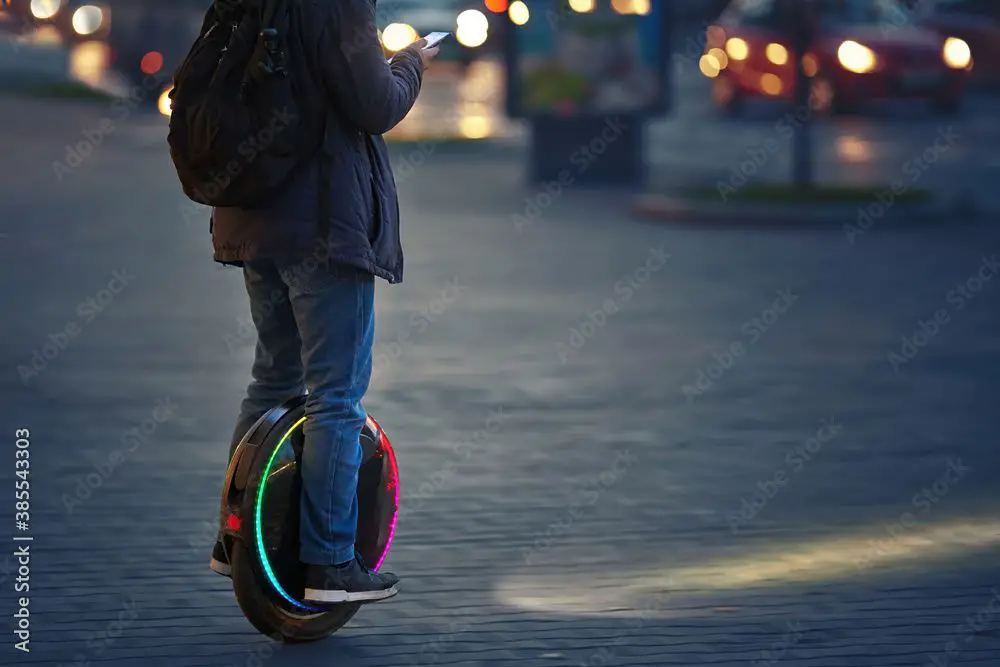How Fast Do Electric Unicycles Go?
Introduction to Electric Unicycles
Electric unicycles, also known as e-unicycles or electric self-balancing unicycles, are a relatively new form of portable personal electric vehicle. An electric unicycle consists of a single self-balancing wheel with foot platforms on either side of the wheel and an electric motor in the wheel hub.
The first electric unicycle was patented in the early 2000s, but commercial models did not emerge until the 2010s. Chinese manufacturers such as KingSong, Gotway, and InMotion introduced some of the earliest electric unicycle models. Since then, dozens of companies have entered the market, advancing electric unicycle technology and performance.
While niche for many years, electric unicycles have steadily grown in popularity over the past decade as prices have fallen and performance has improved. Enthusiasts appreciate electric unicycles for their compact size, maneuverability, and range. Major markets today include the United States, parts of Europe, and East Asia.
Top Speeds
Electric unicycles are capable of reaching impressive top speeds. The current electric unicycle world speed record is 82 mph, set in 2018 by Canadian Mischo Erban riding a modified KingSong model (https://motoped.com/best-electric-unicycles/).
While record speeds are extremely high, most stock electric unicycle models max out at more reasonable speeds. Popular beginner models often reach 10-15 mph, while higher-end electric unicycles can reach speeds of 25-40+ mph. Some of the fastest stock electric unicycle models include the InMotion V12 at 40 mph, Gotway RS at 35 mph, and KingSong S18 at 25 mph.
The top speed of an electric unicycle depends on several factors. Key factors include the motor power, battery output, wheel size, tire tread, rider weight, terrain, and speed limiter settings. More powerful motors, higher voltage batteries, larger wheels, and lower rider weights allow electric unicycles to reach faster top speeds.
Speed Regulations
Electric unicycle speed regulations vary significantly by location. In the United States, laws differ at the state and local level. For example, according to user reports, some areas in Texas have no speed regulations for electric unicycles, while major cities like Austin limit speeds to 15 mph. In California, laws limit electric unicycle speeds to 15 mph on public property.
In Europe, regulations are determined more at the national level, but can still vary locally. Many EU countries follow broader regulations that limit electric bicycle speeds to 25 km/h, which often applies to electric unicycles as well. However, riders report that Denmark allows speeds up to 45 km/h. Areas like Norway and Germany have more restrictive 15 km/h speed limits in many public places.
Overall, speed regulations remain a complex patchwork of laws that electric unicycle riders must research carefully for each location. Knowing the local rules is critical for staying legal and avoiding penalties like fines or confiscation of electric unicycles exceeding speed limits.
Acceleration
Electric unicycles can accelerate to top speed very quickly, often reaching 15-20 mph in just a few seconds. This rapid acceleration is one of the biggest appeals of EUCs for thrill-seekers. The actual acceleration speed depends on the model and motor power.
High-performance EUCs like the Inmotion V12 can go from 0 to 15 mph in around 3 seconds, while more entry-level models may take 5-6 seconds (Source: Electric Unicycle Acceleration – YouTube). The powerful 4,000W motor allows rapid torque and acceleration off the line.
Heavier riders will notice slightly slower acceleration compared to lighter riders on the same wheel. Tire pressure can also impact acceleration performance, with lower pressures resulting in slower times. Overall, modern electric unicycles provide an exhilarating burst of speed from a standstill position.
Factors Affecting Speed
There are several key factors that impact the top speed of an electric unicycle:
Wheel Size
Larger wheel sizes allow electric unicycles to reach higher top speeds. With a bigger wheel diameter, each rotation covers more distance. Many high-performance models now use wheel sizes of 16 inches or larger.
Motor Power

More powerful motors can propel electric unicycles to faster speeds. Motoc power is measured in watts. High-end electric unicycles may have motors over 3000W, allowing speeds over 60 mph.
Battery Capacity
Higher battery capacity provides more range, but also enables faster speeds. Batteries with higher amperage outputs can deliver more power to the motor. Premium models may have over 2000Wh of capacity.
Rider Weight
Heavier riders will reach lower top speeds than lighter ones, because more power is needed to accelerate their weight. Most electric unicycles have weight limits around 260 lbs.
According to the EUC Forum, wheel size and motor power are the primary factors determining top speed.
Speed Control
Electric unicycle riders have a few different techniques for controlling and varying their speed. The primary method is by adjusting the pressure and angle of their feet on the pedals. By pressing down more firmly, riders can accelerate, while easing up pressure will cause the EUC to slow down. Turning the feet diagonally on the pedals will act as a brake and limit maximum speed (source: https://www.bestunicycle.com/how-do-you-control-an-electric-unicycle/).
Another technique riders use is shifting their body weight. Leaning forward increases acceleration, while leaning back slows the EUC down. Twisting the torso and legs in opposite directions can also be used to control speed when turning or maneuvering. Proper stance with bent knees helps absorb shocks and maintain stability at higher speeds (source: https://www.reddit.com/r/ElectricUnicycle/comments/ovc244/steering_and_speed_control/).
Safety
Riding electric unicycles at high speeds requires taking proper safety precautions. Protective gear like helmets and pads are crucial for responsible riding. Below are some tips for staying safe while riding fast on EUCs:
-
Always wear a helmet – Choose a full-face helmet for maximum protection. Helmets reduce the risk of head injuries in a fall or collision.
-
Use protective pads – Knee pads, elbow pads, and wrist guards help prevent injury to joints and extremities. Pads cushion falls and provide abrasion resistance.
-
Wear gloves – Gloves improve grip and protect hands from scrapes if you fall. Full-finger motorcycle gloves offer the most protection.
-
Consider a riding jacket – Motorcycle jackets, especially those with armor, shield the upper body and shoulders.
-
Learn controlled stopping – Practice emergency braking techniques to quickly yet safely stop when needed.
-
Ride defensively – Scan ahead for obstacles and be prepared to react. Keep a safe distance from vehicles and others.
-
Respect speed limits – Abide by speed regulations on roads and trails. Slow down in crowded areas.
-
Know your limits – Ride within your ability level. Don’t dangerously exceed speeds you can safely handle.
Taking responsibility for your own safety and keeping awareness of your surroundings is key to enjoying electric unicycles while minimizing risk.
Use Cases
Electric unicycles can be used for a variety of purposes, including commuting, off-roading, racing, and performing tricks.
Many people use electric unicycles for commuting to work or school. They offer a convenient and fun way to navigate city streets and avoid traffic. Their compact size makes them easy to carry onto public transportation or store at your destination. Electric unicycles have a typical range of 15-60 miles, allowing riders to cover a significant distance before needing to recharge. Some commuters appreciate the ability to travel faster than walking or biking without breaking a sweat.
The high torque motors in electric unicycles also enable off-road riding on trails, grass, or gravel. Fat tire models with suspension can comfortably handle rough terrain. Riders enjoy taking electric unicycles on camping trips or outdoor adventures where a regular bike wouldn’t fare as well. Their small footprint allows maneuvering through tight spaces.
Racing competitions for electric unicycles test speed, agility, and tricks. Groups like the Electric Unicycle Racing Association organize events where riders can compete against one another on courses with jumps and obstacles. Winning requires mastering quick acceleration and sharp turning.
Skilled riders perform tricks like jumps, spins, and riding backwards or with no hands. Electric unicycles allow bouncing, flipping, and floating in ways not possible on a regular unicycle. Their spinning pedals enable grind rails and ride wheelies. Riders record and share their stunts through online videos.
Future Outlook
The future looks bright for electric unicycles as developments in technology will likely lead to improvements in speed, range, and accessibility. Lighter materials like carbon fiber and advanced battery technology will allow for increased power and range from smaller and lighter models. Suspension systems and self-balancing features are also being developed to make electric unicycles easier to learn and more comfortable to ride over uneven terrain. As prices continue to decrease, electric unicycles will become more mainstream and appeal to a wider demographic beyond tech enthusiasts.
Manufacturers are working to make electric unicycles more accessible to new riders through improved self-balancing, which will allow beginners to learn to ride more quickly. More powerful self-balancing algorithms coupled with sensors that can detect and adjust to terrain changes will open up electric unicycle riding to many who found it too challenging in the past. Companies are also developing electric unicycles tailored for commuting, recreation, off-roading, and other specific use cases.
Overall, the popularity of electric unicycles continues to grow thanks to an avid community of early adopters and a promising future as prices drop and technology improves. Their unique combination of portability, ease of use and fast acceleration ensures electric unicycles will become a common urban mobility option. According to one source, “Electric unicycles represent personal electric transport in one of its purest, most exciting forms.” (https://electric-biking.com/electric-unicycles-future/)
Conclusion
To summarize, electric unicycles are capable of reaching maximum speeds ranging from 10-80 mph depending on the model and rider input. While public roads impose speed regulations, advanced electric unicycles enable riders to reach very high speeds on private property. Thanks to powerful motors and accelerators, electric unicycles can accelerate quickly and reach high speeds relatively rapidly after takeoff. Factors like battery output, motor wattage, tire traction, and rider weight also impact top speeds. Riders can modulate their speed using pedal tilt sensors and wheel throttles. While high speeds raise safety concerns, responsible riding and protective gear help minimize risks. Ultimately, electric unicycles enable convenient personalized transportation with the ability to reach fast speeds after mastering the unique riding style.




